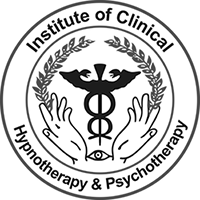• Though specialist professional training and clinical experience may be less relevant for first time referrals in nonspecialist settings such as primary care, expertise is important for more “difficult” cases (chronic, negative, severe or hostile patients). It follows that specialist psychotherapy centres should have adequate numbers of trained and experienced professionals who offer treatment to this group.
• Appropriate supervision, even of experienced therapists is important in view of the likelihood of ruptures of the therapeutic relationship and the adverse effect this may have on therapeutic outcome.
• There is evidence that manuals of psychotherapy have much to contribute to the training of psychotherapists. Models of good training practice could include acquainting candidates with training manuals and formally assessing their capacity to adhere to these.
• The literature clearly indicates that whereas good knowledge of the key components of a technique lays an important foundation for effective practice, flexibly, and deviate and go beyond them at times when the clinical situation seems to require this.
• There is some limited evidence in the literature suggesting that in-depth training in multiple modalities may improve the therapeutic efficacy of individual practitioners. Further research needs to be undertaken to establish the value of training in multiple orientations for therapists.
Hypnotherapy 93% recovery after six sessions
Psychoanalysis 38% recovery after 600 sessions
Counselling
Behaviour therapy 72% after 22 sessions
A survey of psychotherapy literature by Alfred A Barrios Ph.D (source: American Health Magazine)
ICHP Hypnopsychotherapists who utilise the “B-Chaps” model (Brief Clinical Hypnoanalytical Psychotherapy Solution Focused) can be relied upon to consistently deliver good results in a professional environment.
The above recovery rates may not be applied to all therapists but only those who are accredited members of the Irish Hypnotherapy & Psychotherapy Register and the Institute of Clinical Hypnotherapy & Psychotherapy.
Did you know that:
• One in four people will experience a mental health problem caused by anxiety and/or depression in a given year
• One in six people experience anxiety and/or depression at any given time
• 450 million people worldwide currently have a mental health disorder
B-CHAPS embodies the ICHPs pioneering fusion of all the quickest and most efficient of healing techniques available into one highly effective system. Our therapy is brief and solution-focused so that the client has a definite contract and time limit and isn’t required to spend indefinite amounts of time (and money) in a more traditional form of psychoanalysis. And yet the core tenets of Freud and Jung are not ignored by B-CHAPS but utilised in the highly effective hypnotic state where cause and effect can be addressed and rectified by accessing the subconscious mind directly and removing the conscious ‘middle-man’. This fusion of psychoanalysis and hypnosis speeds up the therapy process beyond dramatically. Furthermore, presenting symptoms of the client are also initially dealt with using cutting edge Cognitive Therapy and NLP. This gives the client relief from their presenting symptoms, helps them to cope in the short-term and ultimately provides a platform and foundation whereby they can launch into the more important work of finding the root cause of the problem in the person’s past and removing it.
Session Two: Solution Focused – Hypnotic suggestion session. Audio recording made of the session while administering therapy to the client. Client learning self-hypnosis and mastery of his/her symptoms, cognitive approaches and symptom prescription.
Session Three: Clearing Session – Fear/symptom cure, Fast phobia/trauma, Pin-point analysis sequence to cause of presenting symptom, desensitisation, ICHP blow away emotion techniques, use additional ICHP techniques as required and if time permits.
Session Four: Additional clearing session if required, depressed clients may need additional recordings, e.g. insomnia, IBS, emotional clearing techniques, parts therapy, EMDR, dreams dreams, NLP, Gestalt, ‘Drop-through Technique’, etc. Please note, to use additional ICHP techniques if required and in context if time permits.
Session Two: Free Association “Sex Talk” “Wise Old Man”
Session Three: Free Association
Session Four: Free Association Automatic Writing
Technique (AWT)
Session Five: Free Association Oedipus/Electra Complex
Session Six: Free Association
Session Seven: Free Association
Session Eight: Free Association
